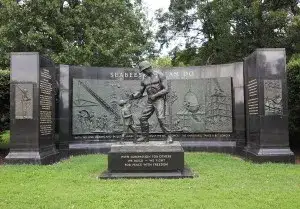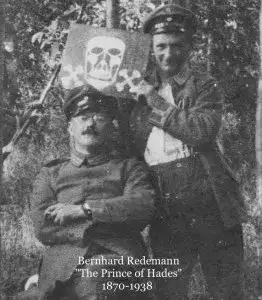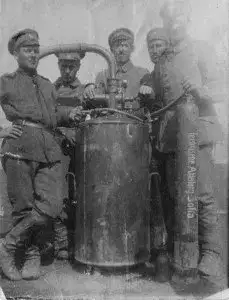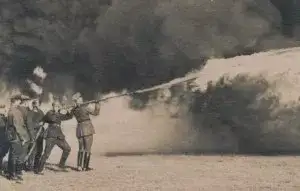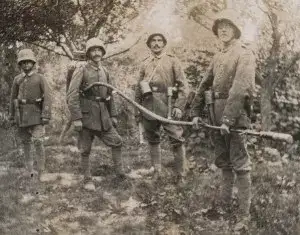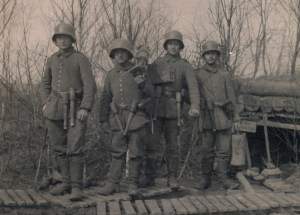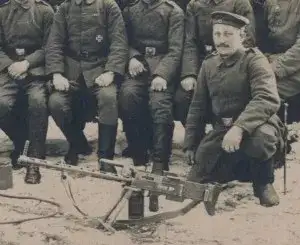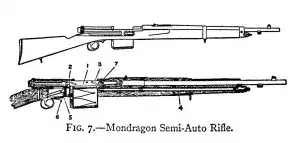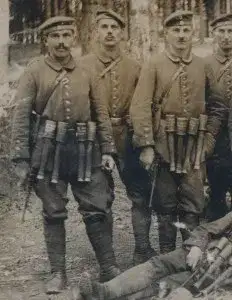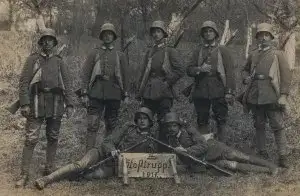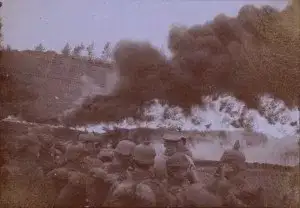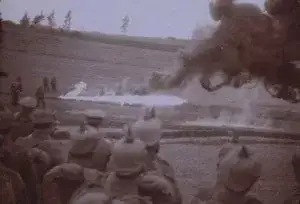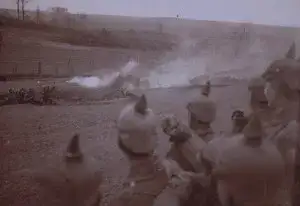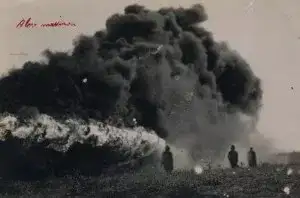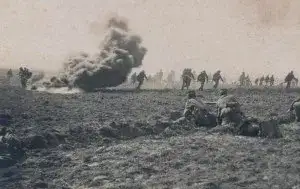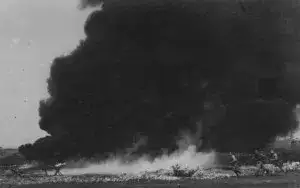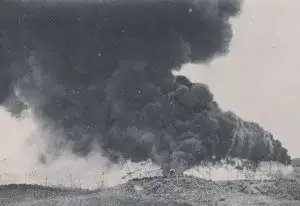Achieving the impossible
July 20, 2023 by Thomas Wictor
“With willing hearts and skillful hands, the difficult we do at once; the impossible takes a bit longer.”
—Inscription on the National Memorial to the “Seabees”
The U.S. Naval Construction Battalions
Today someone asked me to comment on the article “The Day Israel Died,” by Kurt Schlichter. An excerpt.
With the Mossad’s assessment in hand that the Iranians were just weeks from not only building an atomic bomb but of placing it atop one of the advanced Russian cruise missiles the lifting of the embargo had allowed them to buy, Netanyahu prepared to act. It would take much of the Israeli Air Force, most of its commandos, its submarine fleet, and its formidable cyber forces to execute the plan. Saudi Arabia agreed to allow overflights and the use of its remote bases. But Operation Masada would have to be conducted in total secrecy.
On July 5, 2016, with one hour to go before launch, Netanyahu received a call from Vice President Joe Biden. U.S. intelligence had seen the preparations and anticipated the strike; Biden, as the conversation transcript later revealed, was clearly frightened.
“Benjamin, we’ve known each other a long time. You’ve got to believe me. If you launch, [President Obama will] warn the Iranians and he’ll order American forces to shoot down your jets. I can’t talk him out of it. He’s serious. He’ll do it. Please, please call it off.”
At that moment, Netanyahu was handed an intelligence update. There was increased aircraft activity on the USS Reagan afloat just outside the Persian Gulf, and Iranian anti-aircraft missile batteries were alerting. President Obama was preparing to launch fighters and had already warned the Iranians.
With a heavy heart, Netanyahu called off Operation Masada. A week later, news of the fiasco was leaked by “an anonymous White house source” to the New York Times. In the resulting uproar in Israel, Netanyahu resigned. His place was taken by an elderly Laborite who proclaimed, “This is an opportunity for peace!” and vowed to work closely with the Obama administration. He was welcomed to Washington the next week and treated with respect in return for his obedience.
Mr. Schlichter was very polite in response to my assessment that none of this will happen. I have nothing against him. But this is what his piece made me want to do.
It’s not possible to talk people out of their conviction that all is lost, so I’m not going to try anymore. It’s too frustrating. Instead, I’ll tell you about an impossible military operation carried out a hundred years ago. The target was Skrobowa, a complex of Russian concrete fortresses that had withstood seven massive infantry assaults by the Germans and Austrians over a three-month period.
The Russian fortresses are at the top of the photo, and the German-Austrian trenches at the bottom. Altogether the fortresses covered a front about 2.5 miles (4 kilometers) wide.
Russian engineers had made these fortresses just about perfect. The largest German and Austrian artillery and mortars shells made no impression, and the machine-gun posts were placed so that the entire area in front of the position was a massive killing field.
Finally the Germans decided that they had to try something different: flamethrowers. The photo above was taken on September 9, 1916. In the aircraft that took the picture was the commander of the German flamethrower regiment, Major Bernhard Reddemann.
After he’d reconnoitered the Russian position, Reddemann came up with an audacious and extremely risky plan. First, twenty-four large, static flamethrowers would be secretly emplaced in the German trenches over several days.
Tunnels would be dug toward the Russian lines. On the day of the attack, the lance operators would pop out of the ground in front of the Russian positions and open fire.
These devices produced massively long flames and gigantic clouds of smoke. While they sprayed the Russian fortresses, twelve “flame shock troops” would race forward in the spaces between the twenty-four tongues of flame. Each flame shock troop was comprised of twelve portable-flamethrower squads, one hand-grenade squad, and five infantry squads.
A portable flamethrower was operated by four men.
The infantrymen who accompanied the flamethrower pioneers were armed with heavy machine guns stripped of their bases.
And light machine guns.
And Mexican semiautomatic rifles.
And long-barreled German automatic pistols fitted with rifle stocks so they could be used as carbines.
The hand-grenade throwers carried their weapons in two bags slung across their chests.
When the attack began, each flame shock troop would advance in a single file to present the smallest possible target. Once inside the Russian trenches, they would destroy everything with their automatic weapons, hand grenades, and flamethrowers. A total of 240 flamethrowers would be used, a record that still stands a century later.
Behind each flame shock troop came two portable flamethrower squads and one infantry shock troop. Bringing up the rear were six battalions of regular infantry advancing in four waves.
The Germans rehearsed the attack for a month. First they built a full-scale replica of the Russian positions using wood, and then they practiced taking it, over and over and over. They covered the model fortresses with enormous green-and-brown tarpaulins to hide them from Russian observation aircraft.
I was lucky enough to find photos of a Skrobowa rehearsal taken by a highly illegal private camera. The German soldier who snapped these pictures would’ve been in extremely hot water if he’d been caught.
At 6:00 a.m. on November 9, 1916, the Germans began a barrage on the Russian positions with heavy artillery and mortars, completely destroying the vast field of barbed wire over a period of four hours. The twenty-four large flamethrowers were turned on at 10:00 a.m. This is what the Russians saw, multiplied by twenty-four.
The twelve flame shock troops ran as fast as they could across 550 yards (500 meters) of open ground. When they hit the Russian lines, it was like this.
Everyone who didn’t have a flamethrower was throwing hand grenades or firing automatic weapons. The infantrymen covered the flamethrower pioneers, who sprinted to the concrete fortresses and sprayed burning oil into the firing slits.
Overhead, airborne intelligence officers in aircraft with two-way radios spoke to Major Reddemann back at headquarters. He had a large map with markers indicating the progress of the assault. The men on the ground laid out cloth sheets to identify themselves to the aircraft, and the intelligence officers dropped fresh orders to them in weighted message streamers.
Since the Russians had never seen flamethrowers, they panicked. The entire position—which had defeated seven major infantry assaults over three months—surrendered within an hour. About 3400 Russian prisoners were taken. Of the 800 German flamethrower pioneers who took part in the operation, sixteen were killed.
Bernhard Reddemann was given an impossible task. To carry it out, he devised tactics that are still used a century later. Paradoxically, the extreme violence of the assault saved thousands of lives on both sides.
And that’s exactly what’ll happen when Israel attacks Iran.
Platoon Lieutenant Jünger, commanded by…Lieutenant Jünger. A Jew.
This article viewed 1064 times.

